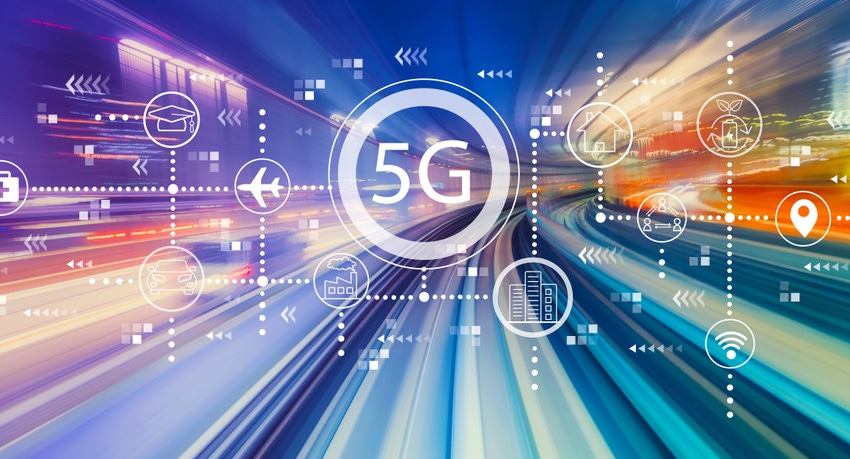The commoditization of the telecoms market means operators in most developed markets have no choice but to implement 5G and to implement it quickly.
February 17, 2020

Telecoms.com periodically invites expert third parties to share their views on the industry’s most pressing issues. In this piece Hayim Porat, CTO of ECI Telecom, looks at what the service provider community needs to do differently in order to cross the chasm and unlock 5G’s revenue potential.
The commoditization of the telecoms market means operators in most developed markets have no choice but to implement 5G and to implement it quickly. The speed of service launches is accelerating, and the fear of missing out is firmly fixed in the minds of the operator marketing and business community.
Early deployments of 5G are based on the non-standalone mode of a new 5G radio with the existing 4G core. Operating 5G over a 4G infrastructure mainly offers faster speeds and better radio and is aimed at improving mobile broadband (eMBB). Operators can promote today’s enhanced Mobile Broadband (eMBB) as heavily as they like, but it’s not going to move the revenue dial any more significantly than it is going to move the speed dial on the connection. Indeed, some operators are offering 5G data plans at the same price as 4G. It’s a sale largely driven by a shiny new handset, rather than the promise of a whole raft of new services.
This form of 5G – simply a better, faster pipe – can only serve to be a disappointment to its backers looking for a real return on their network investment and to its users expecting something vastly improved or different. The handset manufacturers might win, again, but the network operators will lose impetus if 5G becomes seen as a speed gain rather than a technological leap.
So what has, or hasn’t, happened to stall the 5G business use cases that gathered so much market attention and excitement – you know: autonomous cars, industry 4.0, the IoT, and smart cities.
Autonomous cars
This one was a real darling of the industry, but the truth is that it will require massive and long-term R&D before it can go mainstream. And it will be many years before anyone in the telecoms industry sees significant revenues from this market as the earliest benefit is likely to be recouped by the automotive industry itself or from early 3rd party app developers.
Industry 4.0
Though undoubtedly closer to fruition than the automotive dream, there is still a way to go before mass manufacturing projects are undertaken according to the Industry 4.0 dream. The sensors, monitoring systems and business intelligence required to be incorporated are still in development. Of greater concern to the operator community however is the growing belief that even when implemented these projects would be best served by private 5G networks or even next-gen WiFi.
IoT
The concept of billions of connected home devices remains strong. The case for it driving operator revenue remains weak – there is little evidence of any appetite to pay much more for the already low fares data bundle. What’s more, existing WiFi networks, LTE and Narrowband solutions look likely to be able to serve most of the business and consumer IoT requirement. Current 5G networks do not make a significant impact on this market.
Smart Cities and Transportation
The current version of 5G has little to offer and differentiate itself here. The fact is that most Smart Cities don’t always need real-time communication – the sensors, monitors and systems serve multiple different needs from regular reporting to event alerting. It is hard to see any premium price being paid for a 5G connection in its current guise for this use case.
What needs to change?
For 5G networks to deliver a return on their investment and begin to live up to the hype, they need to be different to all the other generations. They need to start taking advantage of the features that do deliver generational, technological leaps forward.
Principle among these is the concept of network slicing and the differential tariffing and service levels that can be made available. Current networks cannot offer those features, but in the core of 5G architecture is the ability to deliver multiple types of services over a unified network using technologies such as network slicing. Take the advanced business services for example: a 5G network could make a very high capacity, low latency, connection available for a specific period of the day to enable a company to schedule high quality low latency video conferences over multiple sites. For smart cities, a 5G network could dedicate or allocate a slice of the network for guaranteed high speed real time emergency communications. One network, but with multiple service and tariffing options.
Developing a true, stand alone 5G network with network slicing capabilities also opens up a wealth of consumer opportunities in the low latency video space. Real-time ultra-low latency video connections have potential in fields such as sports broadcasting, online gaming and even remote medical applications. Or for example real time video communication capabilities, where a consumer can quickly, and easily set up a highly reliable, low latency connection for remote health, family conferencing, and much more.
In a world where network resources are limited, network slicing is the technology of choice for network architects and industry bodies when it comes to unlocking the potential of 5G networks and innovative use cases.
Network slicing is an architectural concept which views the network as a pool of assets: physical network resources, virtual network resources, connectivity, bandwidth and computing power. A network ‘slice’ combines these assets, in different combinations, to form a virtual network. Each slice is customized to meet the specific needs of the applications, services and resources that need to run over it.
I admit, that I have heard from some that the benefits of network slicing do not outweigh the complexities, and the costs, of re-architecting the network. I would argue that the full benefits of 5G cannot be delivered without network slicing and the question operators need to answer is not whether to implement slicing, but when to make that commitment. I don’t believe that adopting a wait and see approach – and hoping the use cases will arise – before pushing ahead with network slicing is the best option for the operator community.
Taken alone, the speed of the 5G network will not deliver a quick return on investment; but the speed at which an operator unleashes the full potential of 5G holds the key to the quickest return on that investment.
 Hayim joined ECI, as CTO, to lead its innovation center and spearhead the efforts in the areas of NFV and SDN in 2015. Hayim is a key contributor to the company’s ELASTIC networks strategy which bridges SDN/NFV, big data, security and cloud services with advanced networking. Hayim brings vast experience in similar positions in the telecommunications hi-tech industry, which include work at Toga Networks, Tejas and Ethos. Hayim holds a B.Sc. in computer science from the Technion and a MBA from Tel Aviv University.
Hayim joined ECI, as CTO, to lead its innovation center and spearhead the efforts in the areas of NFV and SDN in 2015. Hayim is a key contributor to the company’s ELASTIC networks strategy which bridges SDN/NFV, big data, security and cloud services with advanced networking. Hayim brings vast experience in similar positions in the telecommunications hi-tech industry, which include work at Toga Networks, Tejas and Ethos. Hayim holds a B.Sc. in computer science from the Technion and a MBA from Tel Aviv University.
Read more about:
DiscussionAbout the Author(s)
You May Also Like








.png?width=300&auto=webp&quality=80&disable=upscale)


_1.jpg?width=300&auto=webp&quality=80&disable=upscale)


.png?width=800&auto=webp&quality=80&disable=upscale)